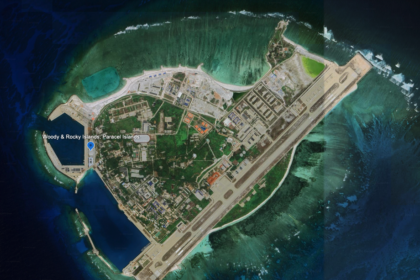Microsoft’s Exit from Pakistan: A Landmark Decision
After a quarter-century of presence, Microsoft has officially closed its office in Pakistan, marking a significant moment for the country’s technology sector. The move, which affects five local employees, is part of a broader global restructuring by the tech giant as it pivots towards artificial intelligence (AI) and cloud-based services. While Microsoft assures customers that its products and support will remain available through regional hubs and local partners, the closure has sparked debate about the implications for Pakistan’s economy, tech ecosystem, and the global technology landscape.
- Microsoft’s Exit from Pakistan: A Landmark Decision
- Why Did Microsoft Close Its Pakistan Office?
- Reactions from Pakistan: Symbolism and Concerns
- Pakistan’s Tech Sector: Context and Challenges
- The Global Shift: AI, SaaS, and the Future of Tech Operations
- Impact on Local Businesses and the Tech Ecosystem
- Comparisons with Other Markets: Why Not Pakistan?
- What’s Next for Pakistan’s Digital Future?
- In Summary
Why Did Microsoft Close Its Pakistan Office?
Microsoft’s decision is rooted in a combination of global and local factors. The company is undergoing a major organizational transformation, including the layoff of nearly 9,000 employees worldwide—about 4% of its workforce. This restructuring is driven by a strategic shift towards AI, cloud computing, and a Software-as-a-Service (SaaS) business model, which reduces the need for physical offices in many countries.
According to Microsoft, the closure is not an exit from the Pakistani market but a transition to a partner-led, cloud-based delivery model. A spokesperson explained that customers in Pakistan will continue to be served through a strong network of local partners and nearby regional offices, a model already used successfully in other countries. The company had already shifted licensing and contract management for Pakistan to its European hub in Ireland over the past few years, with local partners handling day-to-day service delivery.
Technology expert Habibullah Khan elaborated on the business rationale:
“Large software enterprises have two business models: on-premise and SaaS. On-premise involves installing and running software on the customer’s servers, with high upfront and maintenance costs. SaaS allows serving a location without on-ground presence, as software is hosted in the cloud and revenue comes from subscriptions. More companies have transitioned to SaaS due to reduced upfront costs.”
This shift means that Microsoft can efficiently serve Pakistani customers without maintaining a physical office, aligning with global trends in the tech industry.
Reactions from Pakistan: Symbolism and Concerns
The closure has triggered strong reactions from Pakistan’s business and tech communities. Jawwad Rehman, the former founding Country Manager of Microsoft Pakistan, described the move as a “sobering signal” about the country’s business environment. He urged the government to engage more proactively with multinational tech firms, suggesting that the current climate is unsustainable even for global giants.
Former President Arif Alvi echoed these concerns, calling Microsoft’s departure a “troubling sign” for Pakistan’s economic future. He revealed that Microsoft had once considered expanding its operations in Pakistan but ultimately chose Vietnam due to greater political and economic stability. This missed opportunity, he argued, highlights the need for more consistent policies and a stable environment to attract and retain international investment.
Despite these concerns, the Ministry of Information Technology and Telecommunication emphasized that Microsoft’s move should not be seen as a complete exit. Instead, it reflects a global industry shift towards cloud-based, partner-driven service models. The ministry stated that it would continue to engage with Microsoft’s regional and global leadership to ensure that Pakistani customers, developers, and partners remain supported.
Pakistan’s Tech Sector: Context and Challenges
Microsoft’s exit comes at a time when Pakistan’s tech sector is facing multiple challenges. Unlike neighboring India, which has established itself as a major engineering and outsourcing hub, Pakistan has struggled to attract large-scale investment from global tech giants. The country’s tech ecosystem is dominated by local companies and Chinese firms like Huawei, which provide much of the enterprise infrastructure for banks and telecoms.
Several multinational companies have recently scaled back or ceased operations in Pakistan. For example, ride-hailing service Careem announced it would end its services in the country in July 2025. These developments have raised questions about Pakistan’s ability to retain foreign investment and foster a thriving digital economy.
Experts and former Microsoft executives point to several factors behind these trends:
- Economic Instability: Pakistan’s economy has faced significant challenges, including a large trade deficit, declining foreign exchange reserves, and currency fluctuations. These issues make it difficult for global companies to operate and invest in the country.
- Political Uncertainty: Frequent changes in government and policy direction have created an unpredictable business environment. No prime minister has completed a full term in Pakistan’s 75-year history, contributing to investor hesitancy.
- Regulatory Hurdles: Complex regulations, high taxes, and difficulties in importing technology have further complicated the operating environment for multinational firms.
- Infrastructure Issues: Internet shutdowns, content blocks, and poor broadband infrastructure have hampered the growth of Pakistan’s digital economy and limited the country’s appeal as a tech outsourcing destination.
Despite these challenges, Microsoft’s products and services—such as Windows, Office 365, and Azure—will remain available in Pakistan through local partners and regional offices. The company’s withdrawal is seen as more symbolic than operational, but it underscores the need for policy reforms and a more stable environment to attract future investment.
The Global Shift: AI, SaaS, and the Future of Tech Operations
Microsoft’s closure of its Pakistan office is part of a much larger trend in the global technology industry. The company is aggressively investing in artificial intelligence and cloud computing, areas that require different business models than traditional on-premise software sales. By moving to a SaaS model, Microsoft can serve customers worldwide without maintaining a physical presence in every market.
This approach offers several advantages:
- Cost Efficiency: Reducing the number of physical offices and local staff allows Microsoft to streamline operations and cut costs, especially in markets where direct sales and support are less critical.
- Scalability: Cloud-based services can be delivered to customers anywhere, enabling rapid expansion and consistent service quality.
- Focus on Innovation: By reallocating resources from local offices to AI and cloud development, Microsoft can accelerate its innovation agenda and stay competitive in a rapidly evolving industry.
Other global tech companies are following similar strategies, shifting from on-premise software to cloud-based solutions and reducing their physical footprints in certain markets. This trend is not unique to Pakistan but reflects a broader transformation in how technology is developed, delivered, and supported worldwide.
Impact on Local Businesses and the Tech Ecosystem
The immediate impact of Microsoft’s closure is limited in terms of job losses—only five employees were affected. However, the symbolic significance is much greater. Local businesses that relied on direct support from Microsoft may face challenges in accessing timely assistance, updates, and training. The departure could also increase operational costs for some companies and create uncertainty about the future availability of advanced Microsoft services.
On the other hand, the move may create opportunities for local tech firms to fill the gap left by Microsoft’s reduced presence. Some experts believe that this could spur innovation and entrepreneurship, as Pakistani companies step up to provide support, integration, and customization services for Microsoft products and other technologies.
Financial analysts warn that the broader economic implications could be significant, including reduced local investment and a potential decline in confidence among other multinational firms. The government may need to reevaluate its economic and regulatory strategies to make the market more attractive to global players and to support the growth of home-grown tech talent.
Comparisons with Other Markets: Why Not Pakistan?
Microsoft’s approach to Pakistan stands in contrast to its strategies in other emerging markets. In India, for example, the company has established a large engineering and development base, contributing to the country’s status as a global tech powerhouse. In Indonesia and Gulf states, Microsoft and other cloud providers have invested in data centers and infrastructure, attracted by stable policies and growing digital economies.
In Pakistan, however, the lack of a robust engineering ecosystem, combined with economic and political instability, has limited the country’s appeal. While Google continues to invest in local educational initiatives and is exploring Chromebook manufacturing in Pakistan, Microsoft’s withdrawal highlights the challenges facing the country as it seeks to position itself as a serious player in the global tech arena.
What’s Next for Pakistan’s Digital Future?
The closure of Microsoft’s office comes just as the Pakistani government announced an ambitious plan to provide half a million young people with global IT certifications, including those from Microsoft. This disconnect between policy ambition and corporate confidence underscores the need for a more coordinated approach to digital transformation.
Looking ahead, Pakistan faces a critical juncture. The government, industry leaders, and the tech community must work together to address the underlying issues that have led to Microsoft’s departure. This includes improving economic stability, streamlining regulations, investing in digital infrastructure, and fostering a culture of innovation and entrepreneurship.
Public sentiment remains divided. Some see Microsoft’s exit as a setback for the country’s digital ambitions, while others view it as an opportunity for local firms to step up and drive the next wave of technological growth. The decision may also prompt policy reforms and renewed efforts to attract other tech giants, ensuring that Pakistan remains on the path to digital transformation.
In Summary
- Microsoft has closed its Pakistan office after 25 years, affecting five employees and marking a shift to a partner-led, cloud-based service model.
- The decision is part of a global restructuring as Microsoft pivots towards AI and SaaS, with similar changes occurring in other markets.
- Local reactions highlight concerns about Pakistan’s economic and political stability, regulatory challenges, and the country’s ability to attract foreign investment.
- Microsoft’s products and services will remain available in Pakistan through local partners and regional offices, minimizing operational disruption for customers.
- The closure underscores the need for policy reforms, improved infrastructure, and a stable business environment to support the growth of Pakistan’s tech sector.
- The move reflects broader trends in the global tech industry, with companies reducing physical footprints and focusing on cloud-based, scalable solutions.
- Pakistan’s digital future will depend on its ability to address these challenges and foster a more attractive environment for both local and international technology firms.












